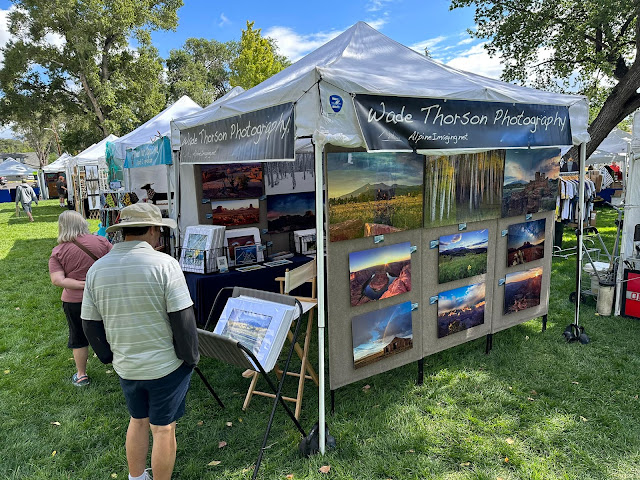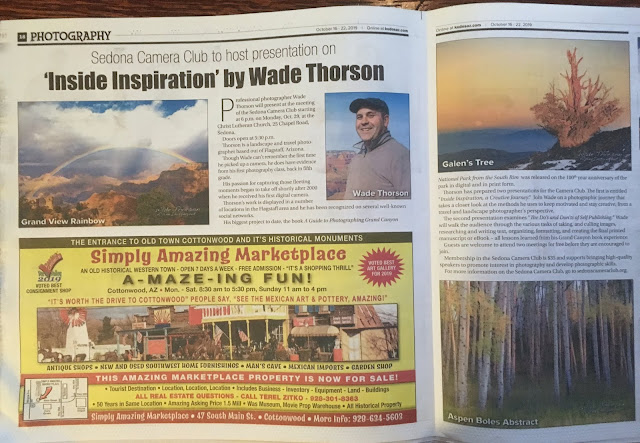Has photography turned into destructive Instagratography?
I love the outdoors, and beautiful landscapes. I also love photographing and sharing them. But what have I done? Lately there have been many articles about how landscape photography has morphed into an obsessive destructive past time. Posting images online and revealing their locations have brought a flood of "me too's", resulting in an ever increasing visitation and copycatting conundrum.
Time was that early photographers shared their work with publications and politicians to affect a change in perception and policy. Works from Ansel Adams, Phillip Hyde, and Katie Lee come to mind. Adams once wrote: “Wilderness is rapidly becoming one of those aspects of the American dream which is more of the past than of the present." A sentiment shared by many, and dating back to even the earliest days of this country. John Muir wrote around the turn of the century: "The battle for conservation must go on endlessly. It is part of the universal warfare between right and wrong."
They both were fundamental members of the Sierra Club, one of the premier organizations that helped battle development and promote conservation of the American wilderness. Phillip Hyde worked with Adams and the Sierra Club and was instrumental at helping protect Dinosaur National Monument, the Grand Canyon, Canyon de Chelly, Canyonlands, and many others with his photography. Philip Hyde adamantly stated that his reason for being a photographer was to "share the beauty of nature and encourage the preservation of wild places."
For better or for worse, I wanted my photography to make such an impact. I love wilderness, and landscapes. It seemed only natural that I would photograph them and share the images in hopes it would instill the appreciation and awe that I possessed with my audience. With such a noble motivation, and brilliant shoulders to stand upon, what could possibly go wrong?
A year or so ago, I was in Chaco Canyon National Park exploring ancient ruins of the Ancestral Puebloan people. Here was a vibrant culture that had created an incredible hub for trade and agriculture, laid to ruin by the effects of tribalism and climate change. I was fascinated by the striking parallels. Having studied and visited there in college over a decade ago, I was excited to return. I was also driving a four wheel drive campervan, that I had newly built. Having driven a '76 VW campmobile for the past 15 years, I wasn't a stranger to vanlife, even before it was a hashtag thing. I was extremely excited to share my accomplishments and exploits in vanning and photography, so I joined a forum of like-minded individuals.
It was in that forum that I had shared a trip report of an adventure I had driving the rough road to Alstrom Point overlooking Lake Powell. I had seen a triptych of Gunsight Butte at an art show, and now with my uber-capable camping machine couldn't wait to "me too." Sure, I did that too, and wrote about and shared it on that forum. A year later I found myself in the Chaco Canyon campground standing next to another adventure van speaking to it's owner. I soon realized we both were members on the forum, and after having exchanged each other's 'handle' we recognized each other. I discovered that he and his wife had just completed the same Alstrom Point trip and used my trip report as their guide.
At first I was flattered. Then I thought, if that guy had seen my post, how many other people have seen the post? Shortly thereafter, I was contacted by a guy starting a tourism website and was asked if he could share my trip report on his website. There was my answer, and hastily, I agreed. Now most people would relish in the attention, and use it to further promote themselves in a "look at me" sort of way. Instead I started to become remorseful. I began to think, "Oh God, what have I done?" I've helped proliferate visitation to a remote and gorgeous location that can't possibly support the added numbers of "me too's."
This issue isn't just affecting my conscience. It is becoming an ubiquitous issue effecting landscapes around the world. Photography has morphed into a social media frenzy of bucket list check boxes. Visitation to locations such as Horseshoe Bend outside of Page, Arizona has been increasing exponentially from when I visited in 2011. It has jumped from less than a thousand people a day to nearly six thousand in a mere seven years. Now there are plans for a visitor center, and parking for 450 vehicles. Jackson Hole Travel and Tourism has recently requested people stop geotagging and posting images of the area, saying “Every time someone captures stunning scenery and tags the exact location, crowds follow.” New Zealand's Roys Peak, and the famous tree in Lake Wanaka are yet another example. Aaron Fleming, an operations director at the New Zealand Department of Conservation, says tourists are getting fixated on reproducing the same photos found on Instagram. “One of the biggest challenges park managers face worldwide is the power of social media to create new visitor destinations at short notice.” The internet is sparking lines of people queuing up to imitate and take all the same photos. Tripod holes have been replaced with geotagged social smart phone holes.
People's inclination of seeing an image and attempting to duplicate it has been around since the days of Da Vinci. It was even taught to budding artists, sparking some really convincing forgeries. But there comes a time when an artist has to strike out on their own to make more original and personal works of art. Same goes with shooting icons. Shooting icons are great. The places are beautiful and inspiring, and they make amazing images. But don't try and shoot forgeries. Try to look at the scene differently. Get creative. Make it personal. Go somewhere else.
But what about those that have no concern for making art? What are we to do about those that inundate these beautiful places just to see how many likes they can get on their social media account? I shudder at the thought. It makes me want to crawl into a hole and pull the hole in after me.
So you want to see that amazing place in person. That's fine I'm all for it. Like Mark Twain says "Travel is fatal to prejudice, bigotry, and narrow-mindedness." But let's not be a lemming. Let's not stand in a queue waiting to take the same photo over and over. And especially let's not geotag it, Instagram it, or love it to death.
 | ||
This ancient ruin located in an alcove in Canyonlands National Park has been permanently closed by the National Park Service for being loved to death. It's location was guarded by the NPS, but the internet has a way of disseminating information, to the detriment of cultural preservation.
Sources:
anseladams.com/ansel-adams-the-role-of-the-artist-in-the-environmental-movement
nps.gov/jomu/learn/historyculture/people
vault.sierraclub.org/history/philip-hyde
library.nau.edu/speccoll/blog/2017/12/katie-lee-goddess-of-glen-canyon-1919-2017
petapixel.com/2018/11/05/how-geotagged-photos-are-harming-natural-landmarks/
petapixel.com/2018/11/30/jackson-hole-stop-tagging-locations/
theguardian.com/world/2018/dec/07/instacrammed-the-big-fib-at-the-heart-of-new-zealand-picture-perfect-peaks







Comments
Post a Comment